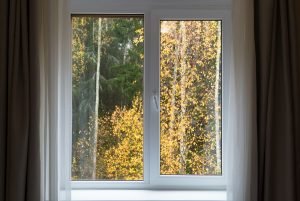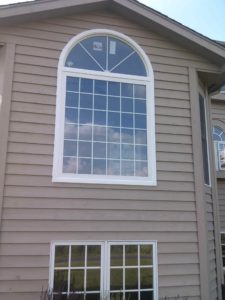 You’ve probably seen a label on your windows or replacement windows you’re considering and wondered what all the numbers and codes on the label mean. Designed by the National Fenestration Rating Council (NFRC), this label can be found on all ENERGY STAR® qualified windows as a guide for contractors and homeowners when choosing windows. Because the climates in different parts of the country vary widely, checking the label before buying a window can make a big difference in how much the window can keep your energy costs to a minimum.
You’ve probably seen a label on your windows or replacement windows you’re considering and wondered what all the numbers and codes on the label mean. Designed by the National Fenestration Rating Council (NFRC), this label can be found on all ENERGY STAR® qualified windows as a guide for contractors and homeowners when choosing windows. Because the climates in different parts of the country vary widely, checking the label before buying a window can make a big difference in how much the window can keep your energy costs to a minimum.
How to Read the Window Performance Label
The NFRC label indicates that a window has been tested and certified based on the NFRC’s energy performance ratings. The most well-known rating on the label is known as the U-factor. The three other window energy ratings are the solar heat gain coefficient (SHGc), visible transmittance (VT), and air infiltration.
U-Factor
The U-factor indicates the rate of heat loss from a material. Much like the R-value that applies to insulation products, the U-factor is a measurement of a product’s effectiveness as an insulator. Whereas the R-value defines the measure of a product’s thermal resistance, the U-factor is measure of a product’s thermal transmission, or heat transference. The U-factor is a reliable rating for windows because glass is an ineffective insulator and cannot resist heat. (However, with low-E glass coatings, glass can limit thermal transmission.) U-factor ratings for windows typically fall between 0.20 and 1.20. The lower the U-factor, the greater a window’s resistance to heat flow and the better its insulating value.
Solar Heat Gain Coefficient
The solar heat gain coefficient indicates how well a product blocks heat from the sun. SHGc is expressed as a number between 0 and 1. A low SHGc means the window transmits less solar heat. A low SHGc is essential in states where home and building cooling costs are usually higher. In colder climates, however, windows with a higher SHGc will better utilize solar heat, potentially saving you on heating costs.
Visible Transmittance
Visible transmittance is an optical property that indicates the amount of visible light transmitted. It is expressed as a number between 0 and 1. The higher the VT of a window, the better it lets in light. Although VT has little to do with thermal ratings, it does affect energy consumption. A window with a high VT rating will help reduce the amount of artificial lighting needed—and therefore, energy—you consume.
Air Infiltration
The air infiltration rating is a measure of how much air leaks through a window. The rating is expressed as the equivalent cubic feet of air passing through a square foot of window area (cfm/sq. ft). The lower the air infiltration rating, the less air will pass through small openings in the window assembly. Heat loss and gain occur by air infiltration through these openings.
How to Use Window Performance Ratings
These ratings give you the information you need to decide which window will work best for specific requirements. For example, if you’re a Chicago-area homeowner who wants windows that can help keep your home comfortable during our winters, pay special attention to U-factor, SHGc, and VT. A high VT rating means a window will let in plenty of natural sunlight; a moderate SHGc value indicates that the window will transmit a moderate amount of solar heat; and a low U-factor means your new window will keep heated air indoors, where you need it.
If you would like to help choosing the ideal replacement windows for your home in the Chicago area, contact Opal Enterprises. We offer and install a wide selection of energy-efficient windows from top manufacturers. We will be happy to arrange a complimentary at-home or virtual consultation with one of our knowledgeable window specialists.





